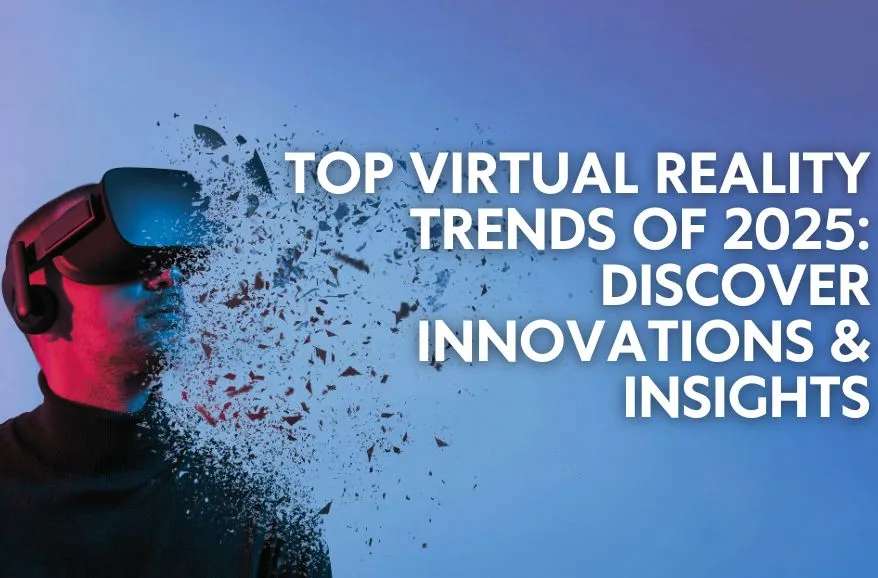
In 2025, virtual reality will be in the limelight due to the radical innovations and the increased consumer interest. Video games, emerging interactive options, and ultra-smart hardware are all indicators of what lies ahead in the VR technology trends. As the digital and real worlds in both work and play have become one in a unified entity for learning and connection. Discover the most recent innovations, consumer trends, and practical activities that are altering the manner in which individuals and companies interact with immersive technology.
Virtual Reality Trends in 2025: A Comprehensive Overview
By the year 2025, Virtual Reality Trends will be marked by the push to hyper-realism, with further developments of Artificial intelligence (AI) and multi-sensory response, which will result in more realistic and immersive VR experiences. This trend has led to more uses in fields like education, healthcare, and professional training. As a result, social VR has grown and more powerful technology is now available at lower prices. The usability and interaction standards are also being redefined as a result of the integration of technologies such as 5G and advanced displays, as well as platforms such as Apple Vision Pro.
AI-Powered Spatial Computing & Intelligent Worlds
Spatial computing integrates digital data and real world on-the-fly. This has improved mixed-reality interaction with such devices as smart glasses and augmented reality and virtual reality headsets.
AI transforms spatial computing to virtual and makes it smarter, interactive, and adaptive. AI is used to develop real-time, personalized simulations, edit worlds in response to users, and operate intelligent digital agents to learn, collaborate, and have fun. These are more and more responsive worlds, with data-driven worlds that learn in advance what you need and provide you with highly personalized content.
Ultra-Light, High-Resolution Headsets & The Smart Glass Transition
The shift to smart glasses is sleek and lightweight, replacing the bulky VR headsets. It is a sign of a change in technology towards AI-enabled screens, such as the Meta Ray-Ban Display. These glasses have the high-resolution displays and can be easily controlled by either gestures or voice, shifting between the immersive VR and the augmented and mixed reality experiences. This development renders the VR software more viable as an everyday technology, as it combines the digital information with physical space.
Rise of Mixed Reality Platforms & Android XR Ecosystem
Combining Augmented Reality (AR) and Virtual Reality (VR) will create Mixed Reality (MR), and it will make the learning process more interactive and dynamic. In 2024, 64% of organizations utilizing MR recorded higher talent retention in their employee training. This hybrid approach allows AR to add the physical aspect and makes it more convenient to engage with the virtual. An example is the case of Boeing, which reduced its wiring time by one-third with the assistance of AR. Companies that apply MR strategies discover that the onboarding process is 50 percent shorter. This means it assists in improving the productivity of the company, as workers are prepared to do complex assignments with no risks involved in the real world.
Cloud Streaming and Cross-Device Virtual Experiences
Cloud streaming and cross-device virtual experiences involve cloud servers to deliver quality VR and AR content. This implies that you can operate it on other devices without requiring high-powered equipment in the house. Its advantages include:
- It can be used on other platforms
- You do not need to install applications, as you can use it on web browsers
- It is used by weaker devices, utilizing cloud processing
NVIDIA CloudXR and Google Cloud Immersive Stream XR are platforms offering tools and services to help developers create and share engaging, interactive experiences that can be easily expanded.
VR Market & Adoption Trends
Virtual reality is no longer a future thing; it is a booming business that is bound to rise further. Recent estimates indicate that the VR market will keep expanding with tremendous growth of 339.29 billion by 2025-2033 with a compound annual growth rate of 27.3.
Moreover, studies indicate that VR training has been discovered to cause a 76% growth in learning efficacy relative to customary practices.
This expansion implies an increasing number of workers.
Industry sources Fortune Business Insights forecast the consumer VR and AR shipment to increase from 17.81 in 2023 to 30.88 in 2026 correctly.
This market growth and adoption of VR is being driven by industries like gaming and entertainment, the lower cost and more powerful technology, and consumer market applications.
VR for Corporate Training, Remote Work & Immersive Events
VR is revolutionizing employee training, remote work, and event management. It offers interactive and interesting experiences that are, in most cases, cheaper than the traditional means. This technology contributes to improved learning and memorizing, enables learning of skills in a safe environment, and makes it easier for teams located in different parts of the world to cooperate in virtual environments. It enhances soft skills, offers technical education, guarantees safety measures, and makes remote teams have fun virtual meeting and event spaces.
Innovations Fueling the VR Landscape
In 2025, here are emerging technical developments driving Virtual Reality Trends like in AI, haptics, and natural user interfaces.
Language Models & Smart Agents for Real-Time Interaction
The smart virtual agents are run on large language models to respond to queries, regulate communities, and interactively direct experience. These artificial intelligence elements are able to understand the speech, act as humans, and guide the users through complex steps or stories, which makes VR worlds more user-friendly and entertaining.
Advancements in Haptics: From Gloves to Fully Immersive Feedback Tech
Haptic technology creates a perception of touch with movements, vibrations, and actions. This makes digital exchanges feel more real and immersive. The haptic technology is not just transforming into vibrations in gloves and controllers, but into more sophisticated devices that will produce a natural feel of touch, temperature, and force. It can be achieved with the help of advanced tools, such as Peltier elements, electrical stimulation, and magneto-rheological fluid (MRF). These are new trends which are upgrading VR/AR, robotics and prosthetics. In the future, the focus will likely be on having AI, making innovations light and wireless. Also, adding more than one type of input. This will likely make the experiences even more realistic.
Use Cases & Emerging Industry Leaders
VR’s reach is expanding, impacting sectors beyond entertainment with practical, life-changing use cases and inspiring industry leadership.
VR Applications in Healthcare, Education, and Live Entertainment
Virtual Reality Trends is also changing the storytelling and teaching process as it provides an interactive experience. The user can be present at a live concert or can interact with an interactive documentary. VR can be used in the medical field to address anxiety and pain management, as patients are able to face their fears in controlled environments. It also promotes training and rehabilitation after surgery. Additionally, students can visit historical locations and learn medical protocols in simulated conditions, which are much more effective than conventional learning methods.
Social VR Platforms, Virtual Concerts & Growing Metaverse Adoption
Social VR is not just a cool product, but a shift in our interaction with one another. Now, VRChat Platform, Horizon Worlds, and Rec Room also have some thrilling new methods of interacting with the users. Online concerts allow customers to attend concerts and organize virtual events in the online environment, such as birthdays. Many individuals like playing with Virtual Reality on their social media, other than the traditional ones.
Conclusion
2025 was a big year for Virtual Reality Trends. New technologies like AI, portable devices, deep displays, and smart, responsive agents are changing how people use virtual worlds for work, school, and fun. VR isn’t just used for videogames anymore; it’s also being used in many other fields. Trends in cloud streaming, VR, and XR are also eliminating barriers. Meta, Sony, and Apple are all coming up with new ways to use virtual technology in social networks, healthcare, education, and events. In the future, virtual reality will be more accurate, interactive, and useful. Therefore, it is the best time to explore its opportunities in the digital world.
Frequently Asked Questions
The recent tendencies in virtual reality (VR) revolve around the implementation of Artificial Intelligence (AI), the development of more realistic and individual experiences, as well as the establishment of social and collaborative settings.
Some of the industries that have applied VR in training and education are healthcare, the aviation industry, manufacturing, automotive, construction, retail, and hospitality.
As much as gaming is a key VR application and market, many other industry sectors are adopting VR more in training, simulations, design, and immersive experiences. Use of VR in healthcare, education, architecture, engineering, and manufacturing has also significantly increased.
The future of VR will be to reach a level of hyper-realism with multi-sensory experience, such as a higher haptic feeling, suggestive sound, or even smell and taste. Similarly, there are major hardware enhancements as well, such as lighter and wireless headsets and ultra-high-resolution displays.
The most successful VR companies are Meta and Sony, the leaders in the market share of a VR headset, with Meta’s Quest 3, the highest-selling standalone VR headset, and Sony’s PlayStation VR2, which is powerful among the console users. Also, Apple and HTC have headed this list.



Leave a Reply